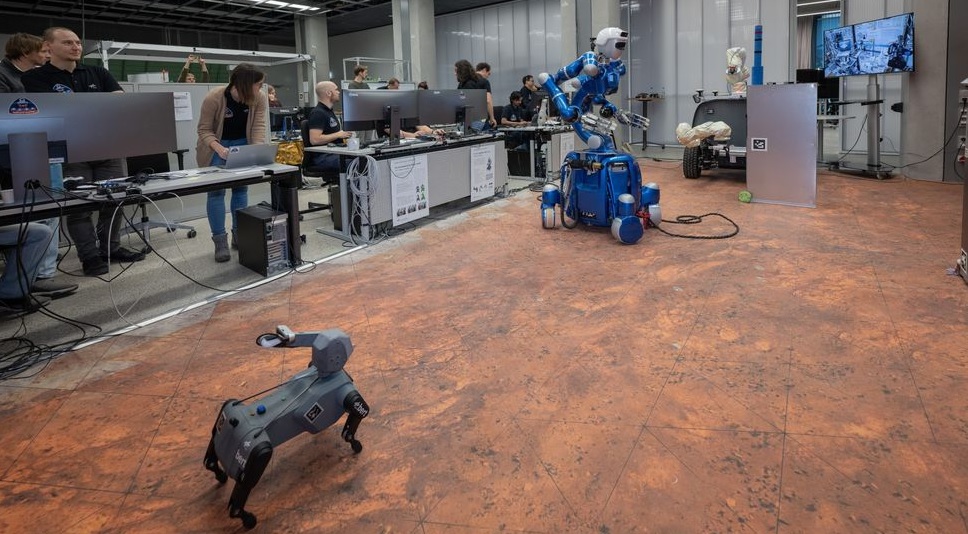ISS Astronaut Controls Bert the Dog-like Bobot on Earth During Simulated Mars Mission

Space News ,World :- In a groundbreaking experiment, International Space Station astronaut Marcus Wandt remotely controlled Bert, a four-legged robot, from space for the first time in January. The decision to equip robots with legs instead of wheels opens up new possibilities for exploring challenging terrains on Mars and other celestial bodies, according to a statement from DLR (the German space agency), which manages the project.
DLR officials highlighted that, until now, only wheel-driven robots had been remotely controlled by astronauts from space. Bert, with its versatile leg-based locomotion, has mastered several gaits and can navigate rough terrains, including small caves, inaccessible to its rolling counterparts.
This recent experiment builds on years of practice with other ISS astronauts and follows work conducted in July 2023 to investigate the impact of time delays on remotely controlling robots during space missions, as mentioned in the release.
Given the time it takes to transmit signals between Earth and Mars, innovative approaches are needed to address time delays in space environments. Even in orbit, astronauts experience slight time delays when controlling robots on the surface.
The robots, operating under the Surface Avatar project, are stationed at the German Aerospace Center in Oberpfaffenhofen, co-managed by DLR and the European Space Agency (ESA). Wandt, who is also a project astronaut with ESA, collaborated with the two-week-long SpaceX Ax-3 mission managed by Axiom Space.
DLR officials explained that Wandt allowed Bert to independently explore the lab's surroundings and monitor the terrain using its camera eyes. The experiment also involved the participation of Rollin' Justin, a humanoid robot on wheels, and ESA's Interact Rover. Together, they successfully installed a short pipe, serving as a prototype for a potential future scientific measuring device.
ESA's involvement in the NASA-led Artemis program, aiming to send astronauts to the moon's surface later in the 2020s, aligns with the international Artemis Accords. These accords aspire to establish a moon base and a permanent presence at the moon's south pole, leveraging potential water resources for rocket fuel, life support, and other space needs.
The Artemis program is emphasized as a valuable testing ground for preparing astronauts for Mars missions in the coming decades. While robots typically undergo decades of development before deployment in space, those working with DLR or on the moon's surface could potentially contribute to future missions to the Red Planet, pending successful testing and technological advancements.


